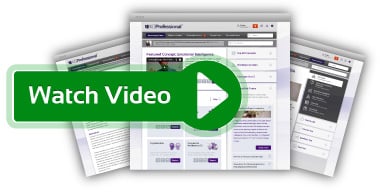Employee Burnout
In the pursuit of organisational excellence, we are often guilty of neglecting our personal health and wellbeing. Consequently, it has recently been estimated that up to 44% of employees experience symptoms of severe emotional exhaustion or stress - known commonly as burnout.
Technique Overview

Employee Burnout Definition
Burnout is a prolonged response to continual job-related stressors, predominantly of an emotional and interpersonal nature. Burnout can be defined by three dimensions − exhaustion, cynicism, and professional inefficacy − and can impair both personal and social functioning (Maslach & Leiter, 2007). Other well-established models of burnout expand upon these dimensions, adding disengagement (Demerouti & Bakker, 2008), reduced resilience (Scheibenbogen et al., 2017), physical fatigue and cognitive weariness (Lundgren-Nilsson et al., 2012) as further salient symptoms.
Employee Burnout Description *
* The full technique overview will be available soon. Contact us to register your interest in our business management platform, and learn all about Employee Burnout.
Business Evidence
Strengths, weaknesses and examples of Employee Burnout *
* The business evidence section is for premium members only. Please contact us about accessing the Business Evidence.
Business Application
Implementation, success factors and measures of Employee Burnout *
* The business application section is for premium members only. Please contact us about accessing the Business application.
Professional Tools
Employee Burnout videos and downloads *
* The professional tools section is for premium members only. Please contact us about accessing the professional tools.
Further Reading
Employee Burnout web and print resources *
Employee Burnout references (4 of up to 20) *
- Bakker, A. B., Demerouti, E., de Boer, E., & Schaufeli, W. B. (2003). Job demands and job resources as predictors of absence duration and frequency. Journal of Vocational Behavior, 62, 341 – 356.
- Childs, B., Weidman, J., Farnsworth, C., & Christofferson, J. (2017). Use of personality profile assessments in the U.S. commercial construction industry. International Journal of Construction Education and Research, 13, 267-283.
- Chiu, S. F., & Tsai, M. C. (2006). Relationships among burnout, job involvement, and organizational citizenship behavior. The Journal of Psychology, 140(6), 517-530.
- Demerouti, E., & Bakker, A. B. (2008), ‘The Oldenburg Burnout Inventory: A good alternative to measure burnout and engagement’ in Halbesleben, J. (ed.), Handbook of stress and burnout in health care, Nova Science Publishers, Hauppauge, New York, pp. 65–78.
* The further reading section is for premium members only. Please contact us about accessing the further reading.
Learn more about KnowledgeBrief Manage and how you can equip yourself with the knowledge to succeed on Employee Burnout and hundreds of other essential business management techniques

